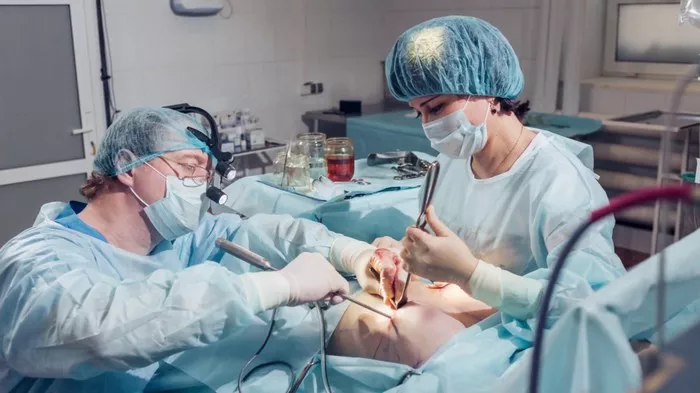Mastectomy, the surgical removal of one or both breasts, is often performed as a treatment for breast cancer or as a preventive measure for individuals at high genetic risk. This operation, though potentially life-saving, carries physical, emotional, and medical challenges that must be clearly understood. Whether performed as a simple mastectomy or with reconstruction, it is essential for patients and caregivers to grasp the common risks and complications associated with the procedure.
In this detailed article, we will explore the most common risks of mastectomy, provide insights into the short-term and long-term effects, and help guide patients through the recovery process. This comprehensive guide will also briefly discuss Breast Surgery Types and link to useful information on Costs, Risks and Time.
Understanding Mastectomy
Mastectomy involves the removal of breast tissue and may include surrounding lymph nodes, skin, and muscles, depending on the type and severity of cancer. The major types of mastectomy include:
Total (Simple) Mastectomy
Modified Radical Mastectomy
Radical Mastectomy
Skin-Sparing Mastectomy
Nipple-Sparing Mastectomy
Each of these options comes with unique surgical approaches and potential complications. The type of surgery chosen depends on cancer staging, patient preference, genetic risk factors, and whether breast reconstruction is desired.
Common Physical Risks of Mastectomy
1. Infection
Infection is one of the most common post-operative complications. It typically occurs within the first few weeks after surgery. Symptoms may include redness, warmth, swelling, and discharge from the incision site. Antibiotics are usually prescribed, but in severe cases, additional surgery may be required to remove infected tissue.
2. Hematoma and Seroma
A hematoma is a collection of blood outside of blood vessels, while a seroma is a buildup of clear fluid. Both may cause swelling and discomfort. Seromas often resolve on their own, but sometimes aspiration (draining with a needle) is necessary.
3. Lymphedema
Lymphedema, or swelling due to lymph fluid buildup, can develop when lymph nodes are removed or damaged. It commonly affects the arm on the side of the surgery and may persist long-term. Physical therapy and compression garments are used for management.
4. Pain and Numbness
Post-mastectomy pain and numbness around the chest, armpit, or arm is common. This can result from nerve injury or surgical trauma. In some patients, this discomfort is temporary, while others may experience chronic pain lasting months or even years.
5. Skin Necrosis
Skin necrosis refers to the death of skin cells due to poor blood supply, usually following reconstruction. Smoking, diabetes, or prior radiation increases the risk. Necrotic tissue may need surgical removal or wound care to prevent infection.
Emotional and Psychological Risks
6. Depression and Anxiety
Undergoing a mastectomy can trigger intense emotional responses. Depression, anxiety, and post-traumatic stress are not uncommon, especially when combined with chemotherapy or radiation. Mental health counseling is often beneficial for long-term recovery.
7. Body Image Issues
Losing one or both breasts may significantly impact a patient’s body image and self-esteem. Reconstruction can help restore form, but the psychological toll may remain. Support groups and therapy play vital roles in adjustment.
8. Intimacy and Sexuality Concerns
Patients often report changes in their intimate relationships post-mastectomy. These changes may stem from physical discomfort, altered body perception, or emotional distress. Open communication and sexual health counseling are recommended.
Complications Related to Breast Reconstruction
9. Implant-Related Complications
Patients who opt for implant-based reconstruction may face specific risks, including capsular contracture (hardening around the implant), implant rupture, or migration. Additional surgeries might be required for correction.
10. Flap Surgery Risks
Autologous tissue reconstruction (flap surgery) uses the patient’s tissue from areas such as the abdomen, thigh, or back. Risks include tissue failure, prolonged surgery time, and donor site complications.
Systemic Risks and Recovery Challenges
11. Anesthesia Risks
Like any major surgery, mastectomy involves general anesthesia. Some patients may experience adverse reactions, including nausea, vomiting, or rare complications such as cardiac or respiratory issues.
12. Blood Clots
Prolonged immobility during recovery increases the risk of deep vein thrombosis (DVT). Patients are advised to mobilize early, wear compression stockings, and possibly take anticoagulants based on medical evaluation.
13. Delayed Healing
Healing times vary based on age, overall health, and whether reconstruction was performed. Compromised healing may lead to extended hospital stays or need for additional procedures.
Recovery Expectations
Understanding what to expect during recovery is essential. Mastectomy patients typically require 4–8 weeks of initial healing time. Resuming full activity may take several months, especially when combined with reconstruction or further cancer treatment. Patients should monitor their surgical sites, follow wound care instructions, and attend all post-operative appointments. For additional guidance, see this overview on Breast Surgery Recovery Time.
Reducing Risks Through Preparation and Care
Although the risks of mastectomy are real, they can often be minimized with proper pre-surgical planning and post-operative care. Factors that reduce risk include:
Choosing a qualified surgeon
Disclosing all medications and medical conditions
Following all pre-surgical instructions
Maintaining healthy habits like quitting smoking
Attending follow-up care regularly
Conclusion
A mastectomy is a significant surgical decision with life-altering implications. Understanding the risks—physical, emotional, and procedural—is a crucial part of informed consent and preparation. While most patients recover without major complications, it is important to acknowledge and plan for the common risks that may occur. With the help of experienced surgeons, mental health support, and careful recovery practices, patients can navigate this journey with greater confidence and safety.Whether you’re exploring your options for Breast Surgery Types or weighing the Breast Surgery Costs, understanding these risks will help you make informed and empowered choices about your treatment path.
Related topics:
- How Long Do You Wear A Post Surgical Bra?
- What Causes Breast Pain After Menstruation?
- 7 Top Medical Reasons For Breast Reconstruction


